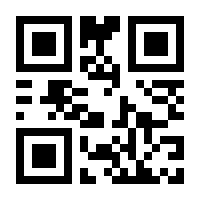
×
![Buchcover ISBN 9783709133699]()
Inhaltsverzeichnis
- 1. Introduction.
- 2. Number Systems and Number Representations.
- 2.1. Counting in Unconventional Number Systems.
- 2.2. Arithmetic Operations in Unconventional Number Systems.
- 2.3. Conversions.
- 2.4. Number Representations.
- 2.5. The Residue Number System.
- 3. Boolean Algebra.
- 3.1. Binary Variables.
- 3.2. Functions of One Variable.
- 3.3. Functions of Two Variables.
- 3.4. Functions of Three or More Variables.
- 3.5. Minimization.
- 4. Logic Circuits.
- 4.1. Diode Circuits.
- 4.2. Transistor Circuits.
- 4.3. Vacuum Tube Circuits.
- 4.4. Circuits with Inverted Levels.
- 5. Storage Elements.
- 5.1. Static Storage Elements.
- 5.2. Dynamic Storage Elements.
- 6. Computer Circuits.
- 6.1. Registers.
- 6.2. Counters.
- 6.3. Adders.
- 7. The Basic Organization of Digital Computers.
- 7.1. Design Philosophy.
- 7.2. The Basic Internal Functions of an Automatic Digital Computer.
- 7.3. The Layout of Early Computers.
- 7.4. The Concept of the Stored Program Computer.
- 7.5. A Model Layout of a Digital Computer.
- 8. The Functional Units of a Digital Computer.
- 8.1. The Arithmetic Unit.
- 8.2. The Control Unit.
- 8.3. The Memory.
- 8.4. The Input/Output Unit.
- 8.5. Communications in Digital Computer Systems.
- 9. Unorthodox Concepts.
- 9.1. Polymorphic Computer Systems.
- 9.2. Arithmetic Units with Problem-Dependent Interconnections.
- 9.3. Hybrid Computations.
- 9.4. Digital Differential Analyzers.
- 9.5. Micro-Programmed Computers.
- 9.6. Machines with Cellular Organization.
- 9.7. List Processors and List Processing Features.
- 9.8. Associative Computers.
- 9.9. Learning Structures, Adaptive and Self-Organizing Systems.
- 10. Miscellaneous Engineering and Design Considerations.
- 10.1. Capability versus Cost.
- 10.2. Speed versus Cost.
- 10.3. Reliability versus Cost.
- 10.4. Error Detection and Correction Techniques.
- 10.5. Computer Evaluations.
- 10.6. Engineering Check List.
- 11. Unusual Computer Components.
- 11.1. Magnetic Components.
- 11.2. Superconductive Components.
- 11.3. The Tunnel Diode.
- 11.4. Miscellaneous Devices.


